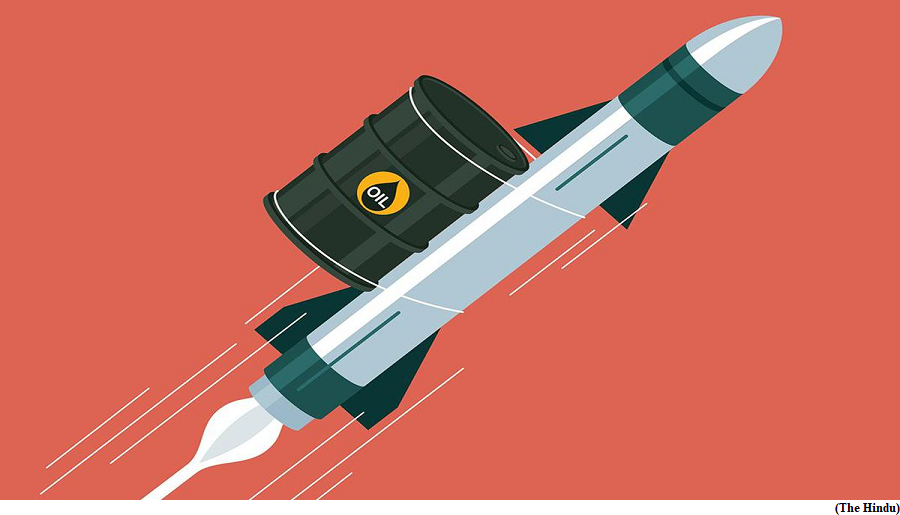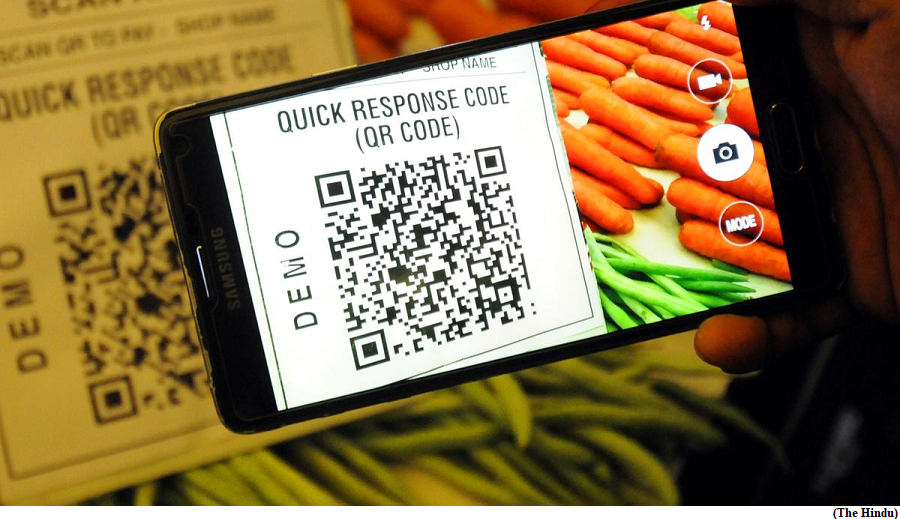IITM Pune demonstrates cloud seeding can produce rainfall (GS Paper 3, Environment)

Why in news?
- A cloud seeding experiment carried out in Solapur city was able to achieve 18% relative enhancement in rainfall, which is approximately 8.67mm more rainfall.
Details:
- The relative enhancement of accumulated rainfall was seen over two hours after seeding the clouds.
- In all, the total enhancement of water availability through cloud seeding experiments was 867 million litres.
- Solapur city falls on the leeward side of the Western Ghats and hence gets low rainfall; 384 mm and 422 mm of total rainfall during the period June to September 2018 and 2019, respectively.
CAIPEEX phase-4:
- The experiment, Cloud Aerosol Interaction and Precipitation Enhancement Experiment (CAIPEEX phase-4) was a scientific investigation conducted in Solapur city during the summer monsoon period of 2018 and 2019.
- The primary objective was to investigate the efficacy of hygroscopic seeding in deep convective clouds and to develop a cloud seeding protocol. The experiment used two aircraft for studying various cloud parameters and for seeding the clouds.
- The study found that cloud seeding is an effective strategy for enhancing rainfall in a region under suitable conditions.
How experiment was conducted?
- A randomised seeding experiment was undertaken to study the effectiveness of cloud seeding in producing rainfall. In total 276 convective clouds were chosen, and 150 were seeded while the remaining 122 clouds were not seeded.
- Convective clouds with a depth of over one kilometre and likely to evolve into deep cumulus clouds were targeted.
- Calcium chloride flare was used for seeding the clouds. A cloud seeding flare releases these particles when triggered.
Convective cloud base:
- The seeding was done at the base of the warm convective clouds and at a time when the clouds were in their growing stage so that the seed particles could enter the clouds with minimum dispersion.
- The convective cloud bases are found at 500-1,500 metres altitude during the summer monsoon period and around 2,000 metres or more altitude during the monsoon break periods, which depends on the moisture content in the lower atmosphere.
- Since the clouds are found at lower heights, the base of the convective clouds is warm, around 15 degrees C.
Key Observations:
- Cloud seeding alone cannot mitigate droughts but can help produce 18% more rainfall and partially address water requirements. Undertaking cloud seeding as catchment-scale projects can possibly help in managing drought conditions.
- One of the most important findings of the study was that not all cumulus clouds produce rainfall when cloud seeding is done.
- They found20-25% of cumulus clouds produce rainfall if cloud seeding is done correctly. Themicrophysics of clouds vary widely and so not all clouds produce rainfall through cloud seeding.
Significance:
- In places like Solapur where water is supplied only once in three days, the availability of additional water through cloud seeding will be immensely beneficial.
What in store for economy in second half?
(GS Paper 3, Economy)
Why in news?
- The Indian economy, measured in terms of the Gross Domestic Product (GDP) as well as Gross Value-Added (GVA), grew 7.8% between April and June (first quarter or Q1) 2023, a four quarter-high.

Details:
- The momentum of economic activity was carried forward in the July-September quarter, despite retail inflation hardening to 6.4% from 4.7% in Q1 thanks to a spike in food prices.
- Growth estimates for Q2 are yet to come, but the Reserve Bank of India (RBI) expects GDP growth to moderate to 6.5%.
- A week into the second half of the year, the Israel-Palestine conflict erupted and a spate of fresh dark clouds now hover over the economy.
How have experts reacted to recent events?
- Economists feel a prolonged conflict in West Asia could push crude oil prices beyond India’s comfort zone and if other countries join the fray, critical sea routes could face disruptions and spike transport and insurance costs.
- The government may not pass on higher petroleum prices to consumers ahead of critical elections, but producers’ costs may still rise. Airlines, for instance, have been hiking fares in line with aviation turbine fuel costs.
- Moreover, higher fuel import bills could pose implications on the exchequer as oil marketing companies may need support for under-recoveries.
- It has brought concerns about fuel, food security and supply chains back to the forefront. She flagged concerns about the impact of any disruptions on inflation in the near future.
- Among the new uncertainties, the spurt in U.S. bond yields hit a 16-year high this month and mixed global data points amid fears of “higher for longer” interest rates.
Is there a shift in the assessment of risks for the economy?
- The International Monetary Fund (IMF) raised its 2023-24 GDP growth estimate for India to 6.3% from 6.1% estimated earlier. This is just slightly below the 6.5% GDP uptick the Finance Ministry and the RBI have penned in for this year, following last year’s 7.2% growth.
- In its monthly economic review report, the Department of Economic Affairs (DEA) in the Finance Ministry said it was comfortable with the 6.5% hopes “with symmetric risks”.
- Bright spots of corporate profitability, private sector capital formation, bank credit growth and construction sector activity offset the risks at the time. These included steadily climbing crude oil prices and an overdue global stock market correction, which it termed “an ever-present risk”.
- The RBI also asserted that risks from the uneven monsoon, geopolitical tensions, global market volatility and economic slowdown, were “evenly balanced”.
- The RBI expects GDP growth to slow to 6% in the current quarter, and further to 5.7% in January to March 2024 before picking up to 6.6% in Q1 of 2024-25.
Caution by DEA’s review report:
- Though domestic fundamentals are strong and improving, downside risks arise from global headwinds that have been compounded by recent developments in the Persian Gulf, and uncertainties in weather conditions due to El Niño effects.
- Depending on how the situation develops, crude oil prices may push higher. Further, the relentless supply of U.S. Treasuries and continued restrictive monetary policy in the U.S. (with further monetary policy tightening not ruled out) could cause financial conditions to be restrictive.
- It was also prescient about the U.S. stock markets having a greater correction risk, which would have spillover effects on other markets.
- The DEA has flagged a broader worry about fraught geopolitical conditions triggering a surge in risk aversion.
Inflation statics:
- Inflation had eased to 5% in September from a 15-month high of 7.4% in July and the department highlighted higher upticks in industrial capacity utilisation levels, private consumption and investment, retail loans extended for vehicles and housing as bright spots in its economic outlook.
- It also cited ‘optimistic’ findings from RBI’s forwarding-looking surveys on manufacturing, consumer confidence, employment and inflation expectations to stress all is well.
Will QR codes improve access to food labels?
(GS Paper 3, Economy)
Why in news?
- The Food Safety and Standards Authority of India (FSSAI) has recommended the inclusion of a QR (quick response) code on food products for accessibility by visually impaired individuals stating that this will ensure access to safe food for all.

Why is the move important?
- The move is vital as India is one of the largest markets of packaged foods in the world and is currently witnessing a growing burden of non-communicable diseases (NCDs) which have seen an abrupt rise globally since the last two decades, according to the World Health Organization.
- Besides other factors, this trend is attributed to aggressively marketed, cheaper, and more easily available pre-packaged foods which is finding a growing preference among consumers.
- Every consumer has the right to know exactly what he is paying for and if he is getting what he is promised and advertised.
- The FSSAI should get the sequence right for labelling and QR code for visually impaired should be part of a mandate for front-of-pack labelling (FOPL) warning labels.
What information will the QR codes provide?
- The FSSAI has advised that these new QR codes should encompass comprehensive details about the product, including, but not limited to, ingredients, nutritional information, allergens, manufacturing date, best before/expiry/use by date, allergen warning, and contact information for customer enquiries.
- It adds that the inclusion of a QR code for the accessibility of information does not replace or negate the requirement to provide mandatory information on the product label, as prescribed by relevant regulations.
- The latest advisory caters to two important regulations:
- The FSSAI’s Food Safety and Standards (Labelling and Display) Regulations, 2020 which outlines the information to be included on labels of food products and
- The Rights of Persons with Disabilities Act, 2016 which recognises the rights of individuals with disabilities and emphasises accessibility of health for persons with disabilities.
How did the QR code come into being?
- A QR code is a type of two-dimensional matrix barcode, invented in 1994, by the Japanese company Denso Wave for labelling automobile parts.
- According to market experts, for the food manufacturers, using QR codes on food products can help improve their brand image, customer loyalty, and operational efficiency.
- A recently published paper titled, ‘Food literacy & food labelling laws—a legal analysis of India’s food policy’, noted that aggressively marketed, cheaper and more easily available pre-packaged foods, often considered as foods high in fat, salt, and sugar, is finding a growing preference amongst consumers in India.
Laws by FSSAI:
- To prevent or control further widespread of NCDs, the FSSAI has issued numerous food and packaging laws and acts to control their manufacture, storage, distribution, sale, and import so that a safe and wholesome food is available to consumers.
- The front-of-pack labelling (FOPL), proposed by FSSAI in 2019, is a key strategy to alert and educate consumers in making an informed choice.
What are the trends in QR use worldwide?
- The U.S., India, France and the U.K. are among the top users of QR code.
- A research paper done on ‘Evaluating the Use of QR Codes on Food Products’ noted that the size of the global packaged food market is estimated at $303.26 billion in 2019, with a compound annual growth rate of 5.2% over this period.
- According to the results of a survey, ‘QR Code Statistics 2022, the Latest Numbers and Use-Cases on Global Usage’, 57% scanned a food QR code to get specific information about the product, 38.99% of respondents want to see QR codes used more and 67% of the respondents agreed that these codes make life easier.




